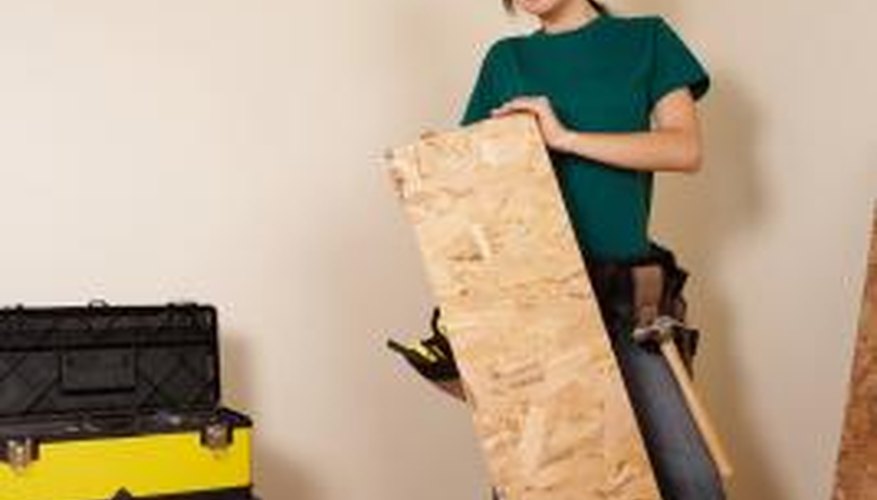Plywood is an excellent building material used in many walls, roofs, and floors. It is strong, durable and easy to work with. However it will soak up water if not properly protected. One method of protecting plywood and adding strength is to cover it with plaster. Before you tackle this project there are a few tips and techniques you should know that will make the project easier and more successful.
Paint the entire work area with an acrylic primer using a paint brush or roller. Plywood is porous and will soak up any water. Plaster is made with water so if you put these two things together without first sealing the plywood it will absorb moisture from the plaster and expand and cause cracks and failures in the final plaster job. The acrylic primer will seal the plywood and help resist any absorption of water.
- Plywood is an excellent building material used in many walls, roofs, and floors.
- The acrylic primer will seal the plywood and help resist any absorption of water.
Attach chicken wire to the entire plywood area you want to plaster. The chicken wire should be evenly rolled out across the plywood and stapled on using a staple gun. Plaster needs something to grab onto to provide strength which is where the chicken wire comes in. It will not grab plywood as plywood is smooth and does not provide the mechanical holds for the plaster to attach to.
Mix together in a bucket the Portland cement plaster and water. You will want the consistency to be fairly thick but thin enough that it can be trowelled onto the wall. It should resemble yoghurt in thickness and when you pull the mixer out of the plaster it should create a peak, or point, which holds.
- Attach chicken wire to the entire plywood area you want to plaster.
- It should resemble yoghurt in thickness and when you pull the mixer out of the plaster it should create a peak, or point, which holds.
Trowel the plaster onto the wall using a hand trowel. You will want to apply it in a fairly thick coat and push it into the wire so it covers the wire but the wire cannot be seen through the plaster. Don't worry about making it look "pretty" at this step as you will deal with that later on, just focus on getting it on the wall and covering everything.
- Trowel the plaster onto the wall using a hand trowel.
- You will want to apply it in a fairly thick coat and push it into the wire so it covers the wire but the wire cannot be seen through the plaster.
Smooth the plaster out using a hand trowel while the plaster is still wet. Start at the top of the wall and pull down to the bottom of the wall using light pressure. Your goal is to smooth out any high or low spots and leave a clean finish. Move over the width of your trowel and repeat until you have smoothed out the plaster across the entire wall.
